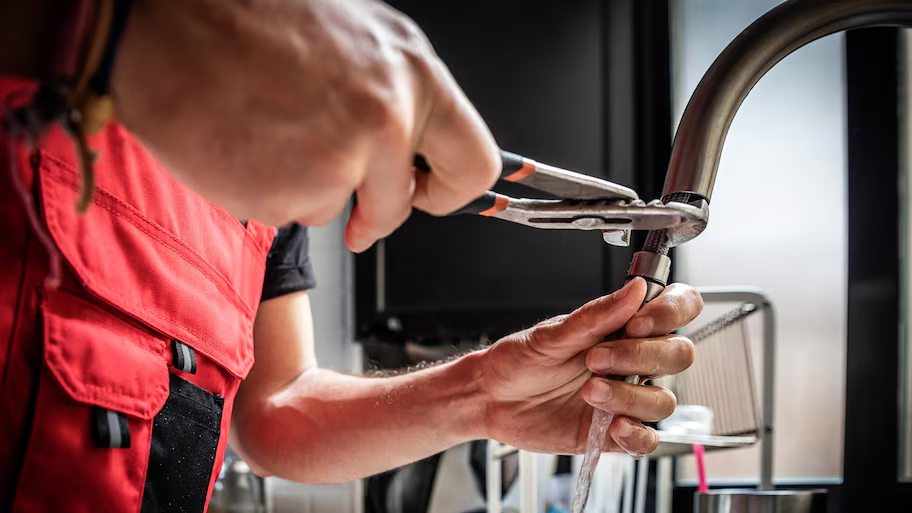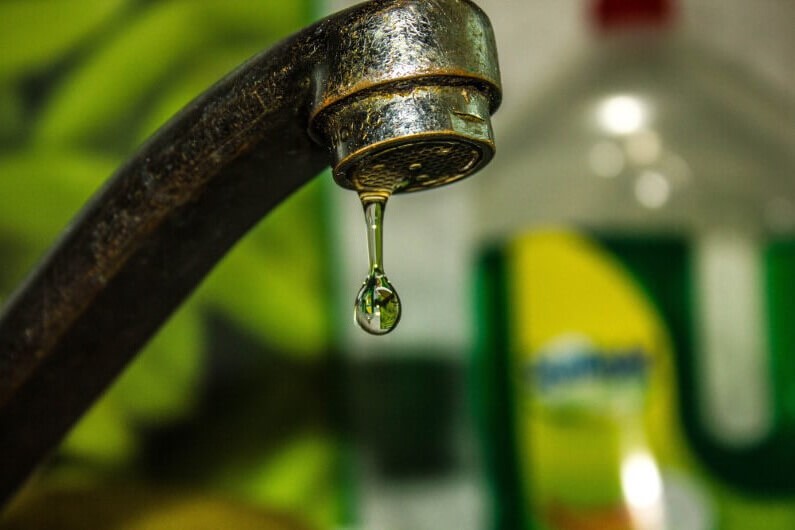What're your thoughts on Why Are My Faucets Dripping (And Can I Fix It Myself)??

Trickling taps could feel like a small hassle, however their effect goes beyond just the annoyance of the audio. From drainage to incurring unnecessary economic prices and health and wellness risks, overlooking a trickling faucet can lead to numerous repercussions. In this short article, we'll delve into why it's vital to address this usual home concern immediately and successfully.
Waste of Water
Environmental Effect
Dripping faucets add dramatically to water wastefulness. According to the Epa (EPA), a single faucet trickling at one drip per secondly can squander more than 3,000 gallons of water each year. This not only strains water resources but likewise impacts communities and wildlife depending on them.
Financial Costs
Raised Water Costs
Past the ecological influence, trickling faucets can blow up water costs significantly. The accumulated waste over time converts right into higher utility costs, which can have been avoided with timely repairs.
Possible Building Damage
Furthermore, long term trickling can cause damage to components and surfaces surrounding the tap. Water accumulation can trigger discoloration, rust, and also structural concerns if left ignored, resulting in extra repair expenses.
Wellness Issues
Mold And Mildew and Mold Development
The constant visibility of moisture from a dripping tap develops a perfect atmosphere for mold and mildew and mold growth. These fungis not just endanger indoor air quality however likewise present health dangers, specifically for people with respiratory problems or allergic reactions.
Waterborne Illness
Stationary water in trickling taps can become a breeding ground for germs and various other virus, raising the danger of waterborne diseases. Pollutants such as Legionella bacteria prosper in stationary water, possibly resulting in severe illnesses when consumed or breathed in.
DIY vs. Expert Repair
Benefits and drawbacks of DIY Repair Work
While some might try to fix a leaking tap themselves, do it yourself repairs include their own collection of obstacles. Without correct expertise and devices, do it yourself efforts can aggravate the problem or cause insufficient repair work, lengthening the issue.
Benefits of Working With a Specialist Plumber
Hiring a specialist plumber makes sure that the underlying source of the dripping tap is addressed efficiently. Plumbings possess the experience and tools to detect and fix faucet problems efficiently, saving time and minimizing the threat of more damage.
Step-by-Step Guide to Dealing With a Dripping Tap
Devices Required
Before attempting to repair a leaking faucet, gather the required devices, consisting of a flexible wrench, screwdrivers, substitute parts (such as washers or cartridges), and plumber's tape.
Common Tap Issues and Their Solutions
Recognize the kind of faucet and the specific concern creating the drip. Typical problems include worn-out washing machines, corroded shutoff seats, or damaged O-rings. Refer to manufacturer guidelines or on the internet tutorials for step-by-step support on repair work.
Safety nets
Routine Upkeep Tips
To stop leaking taps, carry out regular maintenance such as cleaning up aerators, inspecting for leaks, and changing worn-out parts without delay. Additionally, take into consideration installing water-saving tools or upgrading to much more effective components.
Importance of Prompt Fixes
Addressing dripping faucets as soon as they're observed protects against more water wastage and prospective damages, eventually conserving both water and money in the long run.
Influence On Home Value
Assumption of Well-Maintained Home
Maintaining a residential or commercial property in good condition, consisting of attending to maintenance issues like leaking taps, improves its regarded worth and value among prospective buyers or tenants.
Influence on Resale Worth
Qualities with well-maintained plumbing components, including taps, command higher resale values in the realty market. Resolving dripping taps can contribute to a positive impact throughout home examinations and arrangements.
Environmental Responsibility
Individual Contribution to Conservation
Taking duty for fixing dripping faucets straightens with more comprehensive initiatives towards water conservation and environmental sustainability. Every individual's actions jointly make a substantial impact on preserving precious resources.
Sustainable Living Practices
By prioritizing prompt repair work and embracing water-saving practices, individuals contribute to sustainable living techniques that profit both existing and future generations.
Final thought
Attending to a leaking faucet surpasses plain comfort; it's a necessary action towards saving water, reducing economic expenses, and protecting wellness and property. Whether with DIY fixings or expert assistance, acting to fix dripping faucets is a tiny yet impactful method to advertise responsible stewardship of sources and add to a healthier, a lot more lasting future.
How to Fix a Dripping or Leaky Faucet
A leaking faucet is one of the most common problems that homeowners encounter, but it being commonplace doesn’t make it any less annoying. The constant drip drip drip of a leaking bathtub faucet, showerhead, or sink tap can disturb your home’s serenity. Left neglected, a dripping faucet can also result in higher water bills and discoloration or mold growth in your sink or plumbing fixtures.
Fortunately, you don’t have to be a trained plumber to know how to stop a dripping faucet. With some basic tools, replacement parts, and a little patience, leaky faucet repair is a breeze. In this article, we’ll explain what causes dripping faucets and how you can fix them.
What Causes a Leaking Faucet?
Kitchen and bathroom faucets come in all manner of designs, but most involve some combination of valves, O-rings, seals, and washers. The O-ring is usually the weakest link, but any one of these pieces can wear down over time. Heat, moisture, temperature fluctuations, minerals, mold, and movement can contribute to warping and corrosion, breaking the watertight seal. This just comes with the territory of being a homeowner. Everything is always subject to wear and tear, and some component parts of your appliances and fixtures need to be replaced on occasion. At least replacement O-rings are cheap!
More rarely, dripping faucets can be a symptom of excessively high water pressure. Were this the case in your home, you would probably notice that the leak is not isolated to one faucet. Water pressure issues are harder to resolve on your own. We recommend contacting a professional plumber if you suspect your water pressure is too high.
How to Fix a Dripping Faucet
Pipe wrench or monkey wrench Allen wrench set Screwdrivers Old towel or rag Shut off the water.
Before you do anything, you need to turn off the water to keep from drenching your kitchen or bathroom. You should find a valve under the sink and against the wall. Once you’ve turned this valve, try turning the faucet on to confirm that the water source has been cut off.
If you can’t locate your local valve for the faucet you’re working on, you can always shut off the water to the house at the main valve. Of course, this will prohibit anyone from using the sinks, showers, or toilets while you’re working on the faucet that’s giving you trouble.
Plug or block the drain.
You’ll be disassembling the faucet and removing some small bits of hardware. Plug the drain with a stopper or rag to avoid the possibility of a small screw falling into your P-trap.
Take apart the faucet assembly.
There are several varieties of kitchen and bathroom faucets, each with its own manner of assembly. For detailed instructions on how to disassemble your faucet, you can refer to the fixture’s manual or contact the manufacturer. If you know whether you have a ball, disc, cartridge, or compression faucet, you can find detailed schematics online.
In general, you need to begin by removing the faucet handles. You might notice a small screw that you’ll need to remove with a screwdriver or Allen wrench. If you don’t see any visible securing hardware, it’s likely hidden under a decorative cap that can be unscrewed or popped off with flathead screwdriver.
Remove each piece methodically, consulting a schematic when necessary. Take notes or arrange the pieces in such a way to make it easier to correctly reassemble the faucet later.
Remove the cartridge.
Once you’ve removed the handles and securing hardware, you should be able to remove the valve cartridge or stem. Some cartridges will slide right out. Other faucet models will require you to loosen a nut with a pipe wrench before you can remove the valve stem.
Examine the exposed hardware.
With the cartridge or stem removed, inspect the component parts. Check the rubber O-rings for wear and tear. Also examine the seat washer for corrosion or other damage. These pieces are usually the responsible parties for a dripping faucet, but it’s worth inspecting the other component parts while you have the faucet disassembled.
Find replacement parts.
Once you’ve identified which faucet component has failed, find an identical replacement. Your local hardware store should have O-rings, seat washers, and other standard components in stock. If you have a luxury or uncommon faucet, you may have to contact the manufacturer for a replacement part.
It’s a good idea to take your old parts with you to the hardware store so you can compare them with the store’s inventory and be sure you’re purchasing the correct replacement.
Reassemble the faucet.
With your new parts in hand, reconstruct the faucet and handles. Don’t be tempted to overtighten screws or nuts. You might think this could create a better seal, but it can instead damage or bend a delicate part of the assembly and create a new problem for you.
Turn on the water and test the faucet.
The only thing left to do is test your work. Unplug the sink, turn the water back on, and try the faucet. Congratulate yourself on a job well done!
https://www.libertyhomeguard.com/how-to-fix-a-dripping-or-leaky-faucet/

Do you enjoy reading about Why Is It Important To Fix Your Leaking Tap/Faucet?? Give a remark directly below. We would be delighted to listen to your feelings about this page. In hopes to see you back again in the near future. Feel free to take the opportunity to promote this page if you liked it. Thank-you for going through it.